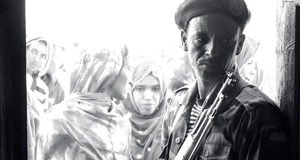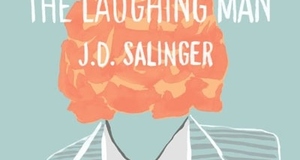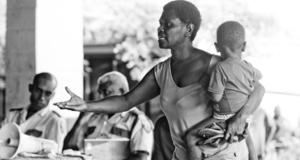"Telepathic Shock" and "The Rush of It All:" Jack Kerouac's Use of Language in On the Road
By
2009, Vol. 1 No. 11 | pg. 1/2 | »
KEYWORDS:
Jack Kerouac once wrote, “It’s not the words that count but the rush of what is said." In a graduate class focusing on the origin, art, and development of effective language, choosing a man of letters who, by his own admission, seemingly overlooks the power of the individual “word” instead of the overall effect of the language may seem a tough task. But Kerouac strode to make a literary language all his own. He writes with a language that pricks at a reader’s subconscious and resonates in bursts of images on the imagination. “Kerouac sought an immediate relation between the object and the writer. The prose that results from this relation is an unmediated representation in language that Kerouac suggests will be the meaning of situations, images, and even music will be recognized by readers via a ‘telepathic shock’”(Thaeado 35). Which is why he dedicated his writing style in the development of his own created automatic writing or spontaneous prose that would serve as the discipline necessary for the rush of language he sought. In theory spontaneous prose (famously outlined by Kerouac in the Essentials of Spontaneous Prose) was the process of turning over the job of writing to your subconscious. As a young writer Kerouac labored over the act of particular sentence structures that he felt sapped all the life out of his work; “I spent my entire youth rehashing, speculating and deleting and got so I was writing one sentence a day and the sentence had no FEELING. Goddamn it, FEELING is what I like in art, not CRAFTINESS and the hiding of feelings" (qtd. in Berrigan 101).Much of the “feeling” Kerouac was looking to produce came from the influence of the emerging bebop scene. The more experimentally inclined improvisers like Charlie Parker and Dizzy Gillespie shook loose the singular measure and diatonic development of the standard jazz ballad. Kerouac reveled in bebop and the way it made him feel and sought to bring that into his writing, “Kerouac introduces constant fluctuations of line speed over pulse with repeated syllables and disjunctive punctuation, akin to the way that a jazz soloist trips himself up to defy prediction” (Hrebeniak 134). With the spontaneity that Kerouac would adopt he found that most common punctuations stunted the flow of his prose. He frequently blasted editors for inserting the trip-ups he felt commas and periods would do to his sentences. He rationed his work to the oral tradition of telling stories. He felt that at a gathering, much like some of the greatest folklores were traditionalized long before the written word had been learned by the common people, when a story was being told “did you ever hear that guy stop to revise himself, to go back to a previous sentence to improve it, to defray its rhythmic thought impact…he’s passed over it like a part of the river flows over a rock once and for all and never returns and can never flow any other way in time…” (qtd. in Berrigan 101). Although Kerouac’s prose were written quickly he let the story germinate over time. In this manner Kerouac was able to captivate his audience by combining his influence of spontaneous bebop while inheriting the traditional feel of auditory sensation through his prose. “Sound and the creative act surge into being via a narrative that maintains the imminence of its own initiation” (Hrebeniak 154). Kerouac’s most widely read work is, On the Road. With its publication in 1957 Kerouac became an overnight sensation. It is fascinating when realized that the original manuscript, a scroll of taped up onion paper, was written in 1951 when he was still creating his style after his first novel, The Town and the City (a Thomas Wolfe inspired work reflecting on his hometown of Lowell) had been published in 1950. Within the six years between 1951 and 1957 Kerouac had written almost seven other books including a work of poetry that are more representative to his action writing; some acclaimed and some chastised. Unfortunately his works were not published in order after the success of OTR and it took away from the overall literary relevance and transformation of his language to the avid reader. Although On the Road initially surprised the public with its social, sexual and pseudo-criminal activities, it is not his most stylistic work in terms of spontaneous prose. Frequently throughout the novel he still writes in a psedu Tom Wolfe or Hemingway esque short prose but in the parts where he truly wants to convey a sense of urgency and shock to the reader Kerouac’s prose are poignant and innovative in their rush of language that would make him one of the great American writers of the twentieth century. Through various passages from On the Road we can see how Kerouac’s innovative style embodies the processual to convey meaning to the reader. Early in the novel it is revealed that the main character and narrator, Sal Paradise, is a broken man from a failed marriage and a bout with an unknown illness. He’s become infatuated with a couple of characters for whom he sees a new thread of American dreams in or as he later puts it, the “Beats”. In this passage, less then ten pages into the novel, we are introduced by what exactly Sal feels is so compelling about these characters and their love of living to their own rules depicting them beautifully as metaphors to Roman candles: They rushed down the street together, digging everything in the early way they had, which later became so much sadder and perceptive and blank. But then they danced down the streets like dingledodies, and I shambled after as I’ve been doing all my life after people who interest me, because the only people for me are the mad ones, the ones who are mad to live, mad to talk, mad to be saved, desirous of everything at the same time, the ones who never yawn or say a commonplace thing but burn burn burn like fabulous yellow roman candles exploding like spiders across the stars and in the middle you see the blue centerlight pop and everybody goes “Awww!” (OTR 5) Kerouac uses his language to reinforce the “mad” people the narrator is obsessed with. It is interesting that before you have the explosion of word repetition, the passage is first set up by the simple first sentence which quickly foreshadows the bleak and disenchanting future that awaits the “mad” ones where the stress is heightened on “sadder” and “blank” but not “perceptive” which is padded between two “and’s”. Directly after we are put back into the context of his remembrance from the past where the characters are dancing like “dingledodies” in the street. “Dingledodies” is a made-up noun used as an adjective that portrays the act of the dancing. Although there is no definition to this noun turned adjective because of its playful nature a reader is able to project their own frantic or maniacal or serene dance as they like from their own experiences and perceptions. Then Kerouac goes on with the use of repetition to rush his words onto the reader creating a sense of urgency to acknowledge to the beats for which he is describing. First he repeats in the separate clauses, “mad to live”, “mad to talk” and “mad to be saved”. Interestingly, each clause has two primary stresses, one always on “mad” and the other on the new information which heightens the intensity of the madness. He then follows up the repetition with another, except this time it is a redundancy of “burn” three times in a row with no comma to separate them. In this method Kerouac is spreading the stress in what could have easily been primary if it were just a single “burn” but instead the stress falls on the adjective “fabulous” which helps illuminate the new information of “yellow roman candles”. Kerouac then stresses “exploding” which leads to “like spiders” which is interesting because the noun “spiders” has been turned into an adjective which again forces the reader to use their own imagination in depicting how a spider would look if it were a roman candle exploding in the air. The next stress comes after “blue centerlight” with “pop” which I found fascinating as it connects with the end of the passage because if you read it out loud the timing seems impeccable between the word “pop” and the reaction of “everybody” that goes “Awww!” as perfect passage of time between sight and sound. It’s also interesting that Kerouac decides to punctuate the “Awww” with an exclamation point. As a reader I do not read the reaction as it were punctuated that way but I feel he strategically placed the exclamation after not as an emphasis to the word as much as a feeling of eureka! In the end we are pulled through this passage first by looking at the sad and blank inevitable future of the “mad” ones but then Kerouac meticulously and mellifluously uses his language to convey the Roman candle metaphor in a way that at first may seem gimmicky but when revisited is a calculated and brilliantly depicted character description. This passage is revealed in the second third of the book when the narrator has returned to San Francisco after traveling across country again with the main antagonist, Dean Moriaty and his defunct girlfriend Mary Lou only to be abandoned by both leaving him in a deep self reflection. What drew me to this particular cut from the novel is its vivid imagery that beautifully brings the reader into the innermost sanctum of the narrator’s psyche where for the first time he describes reaching a “point of ecstasy” between good and evil. And for just a moment I had reached the point of ecstasy that I always wanted to reach, which was the complete step across chronological mortal realm, and the sensation of death kicking at my heels, and myself hurrying to a plank where all the angels dove off and flew into the holy void of uncreated emptiness, the potent and inconceivable radiancies shining in bright Mind Essence, innumerable lotus-lands falling open in the magic mothswarm of heaven. I could hear an indescribable seething roar which wasn’t in my ear but everywhere and had nothing to do with sounds. (OTR 162) Kerouac depicts a harrowing out-of-body scene where time seems to have come to a stand still with the use of language. Unlike most of the book where the narrator is steeped in observation of the “mad” world and the language is felt through the rush of broken up sentences heavy on repetition, this passage is compelling to me because the rush of language is so vivid and revelatory painting a perfect picture of how the narrator has found a solitary peace while being in limbo on his journey. From the beginning of this passage it is revealed that “for just a moment” we are to step inside his elation and the content and theme of this passage is that the narrator has “reached the point of ecstasy that I always wanted to reach”. As a reader I am completely drawn into this opening of the passage because the revealing context of it. By emphasizing that this “ecstasy” was something the narrator had been searching for, a “complete step across chronological mortal realm,” and it is now upon him is a crucial part within the novel. We are introduced to exactly what this ecstasy looks like and the power and feeling of the language unravels as we are brought inside the euphoria of the revelation with the narrator. Because textually, like most of his writing in OTR this passage is one long sentence it is effective for Kerouac to introduce this ecstasy with a noun clause as to keep the rush of the sentence fluent. It becomes clear that this step across the mortal realm is where the narrator has become embattled between heaven and hell where death is a sensation that antagonizes and pushes him to “a plank where all the angels dove off and flew into the holy void of uncreated emptiness”. Through the language the rushing words create a distinct feeling of immediacy. The unraveling of this scene through the language is what makes this excerpt so potent. First we are introduced for the first time that this narrator has been waiting for this sort of eureka and within two commas of the rolling sentence we have been brought deep within the euphoria of the narrator as he flees the pricking of death on his heels and ganders down at drifting angels. The meaning of this passage is created through the vividness of the language. The power of verbs is evident these first few lines; “hurrying”, “dove”, “flew” all help to focus the rush of language but most importantly depict the sensation of being in limbo within life. Most vividly though is the angels diving and flying into the “uncreated emptiness” to bring the reader back into perspective.Continued on Next Page » Suggested Reading from Inquiries Journal
Inquiries Journal provides undergraduate and graduate students around the world a platform for the wide dissemination of academic work over a range of core disciplines. Representing the work of students from hundreds of institutions around the globe, Inquiries Journal's large database of academic articles is completely free. Learn more | Blog | Submit Latest in Literature |


















